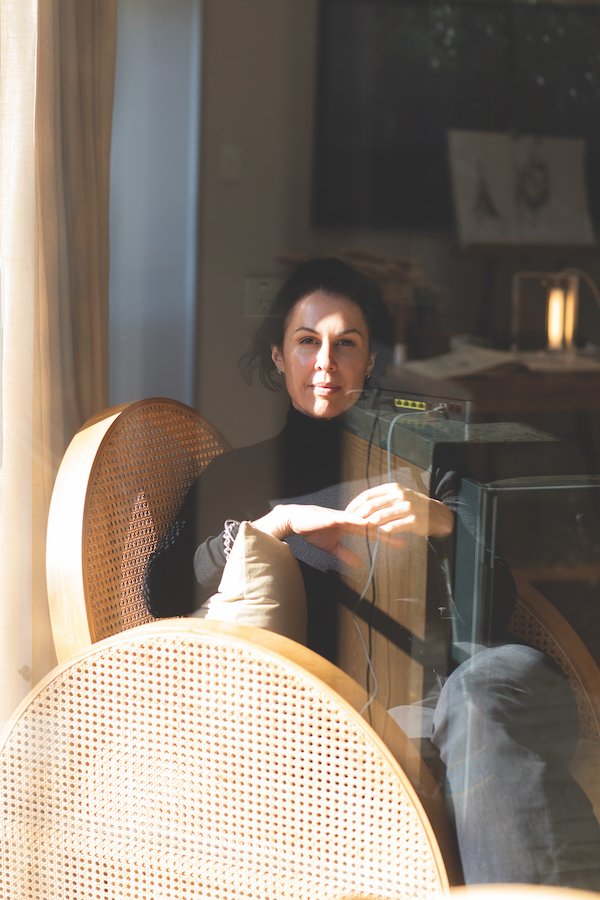Bec Snelling in her studio and factory.Courtesy: Snelling Studio, Aotearoa.
Can you tell us about your arts background and how this has informed your work as a designer?
It’s quite an interesting journey. Luckily for me, being an artist was actually a tangible career path in my family – my great aunt was a celebrated New Zealand artist. In high school, art was the area I always excelled in. I understood form, tone, line, balance, and colour. At the end of high school my art teacher put me off going to art school. It was odd for me because I had always felt that it had been my calling. So, I went off and did a bit of art history and all sorts of other things.
I went to live in Melbourne for quite some time, and I felt myself gravitating back towards my art practice. I knew I had this calling and I wanted to go back to New Zealand and train to be an artist. I was invigorated at art school, I’d never felt more at home. While I was there, I was drawn to making functional objects too. Lighting came in quite early. Making functional objects was juxtaposed with an absolute compulsive obsession with figurative art and life drawing. Which is just me, I can be a walking contradiction at times. One minute I’m playful and crazy and next I am serious and formal.
Can you tell us how Snelling Studio began?
I had begun my business in my fourth year at art school. It was previously known as Douglas & Bec and in its inception I started making lamps. My tutor at art school had suggested that I combine my practice with my skill in making objects. At the time it was hard to take him seriously because there wasn’t a place yet for these sorts of designed objects, but as I progressed on in my career, it really has all come back to my artistic practice. Everything has a conceptual idea behind it.
I struggled for a while; I felt like I didn’t fit in – I wasn’t fully an artist, but I definitely wasn’t an industrial designer. I sought drugs and alcohol and hit rock bottom, because of a number of reasons. The pressure had become too much, of not just being a creative, but of being a creative woman. I got well again but then at 30 days sober my studio burnt right down to the ground. Ashes to ashes, dust to dust. It was just incredible. I didn’t look at that as an ending point, I looked at that as just the beginning. I thought ‘I am going to this and I’m going to do it a new way’. All my learnings and knowledge about the materiality and design were still there. But now I got to open my practice back up and be authentic. The first collection Lens was incredibly cathartic. It was a starting point.
What was the inspiration behind Lens?
Lens was a way of unlearning and relearning. And that’s what I was doing as a woman in recovery, I had to rebuild my life – I think the work really spoke of that. There are traces of different rituals and habits in the collection, for example, the Lens block light is inspired by a yoga block, as hot yoga has become integrated into my life. Optical illusions are something that I really enjoy and I’m a real starer – I love to stare and look at things and work out what’s going on with them. I love it when you close your eyes after you stare at a light and you have the negative image imprinted on your eyes. There’s a lot of play in this collection.
How do you go about material selection?
I spend a lot of time in factories and with makers and I’m always inspired by these visits. When I found Cibatool [a material traditionally used in mould-making] I was just poking around and then asking the makers we collaborate with if anyone uses it to make final products. Cibatool is used to make boats and other fibreglass structures, but I wanted to know if we could use it as the actual structure. I love that about design. That’s when you know things are going well, when things are organically flourishing, and you are following your instincts. This part of the process is so rewarding because you’re stretching your capabilities.
Cibatool has become a favourite material, not just because we are using it in this way, but because it’s a beautiful pink colour. In a very masculine-based industrial design world, there’s always been a feminine touch to my work.
Do you seek inspiration from your environment?
I live in the countryside, and I’ve always enjoyed
that sort of life. I find I’m visually very overstimulated, so it suits me to live out of the city and have the space I need to step back from it all. I need clear space so I can be as authentic to my voice as possible. I like to remain curious and have a real beginner’s brain. I don’t normally find myself drawing direct inspiration from the landscape. My inspiration comes from everywhere, it’s a real mix from many different places.
Do you have any art or design pieces at home?
I have several of my great aunt Helen Brown’s paintings. I have an Aesop oil burner designed by Henry Wilson which I love. I use it all the time and it’s currently bringing me joy. My house is mostly filled with prototypes and experiments; chairs that aren’t quite the right proportions and pieces that weren’t put into production.
What’s on the horizon for Snelling Studio?
We’re working on a few iterations of the Lens collection now. We’re allowing room and space for experimentation and are utilising new technology where we can. We’re experimenting using paper as sculptures and experimenting with using New Zealand wool as a substrate. I’m also interested in developing a signature Snelling Studio chair or stool – so that’s a project that’s in the works. There are all sorts of things on the horizon and some fish just get fatter quicker.
I have so much gratitude for some of our European supporters; namely Toogood Studio and Max Lamb, that have allowed us to keep pushing and staying true to who we are. I just have a lot of gratitude, this is stuff I wanted to do 20 years ago, I just didn’t have the bravery or the audience. I’m so grateful there’s room and space now, and that we can continue to grow and develop.

